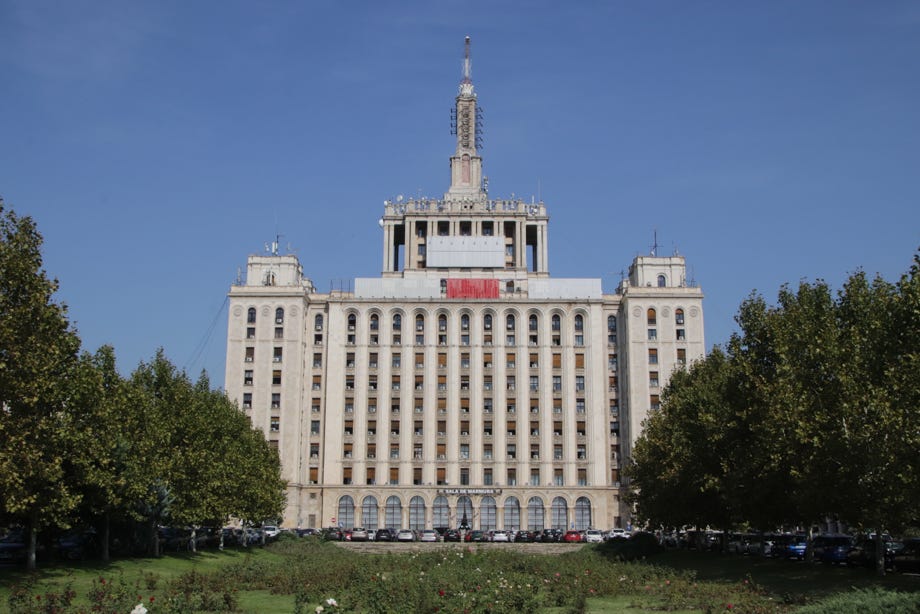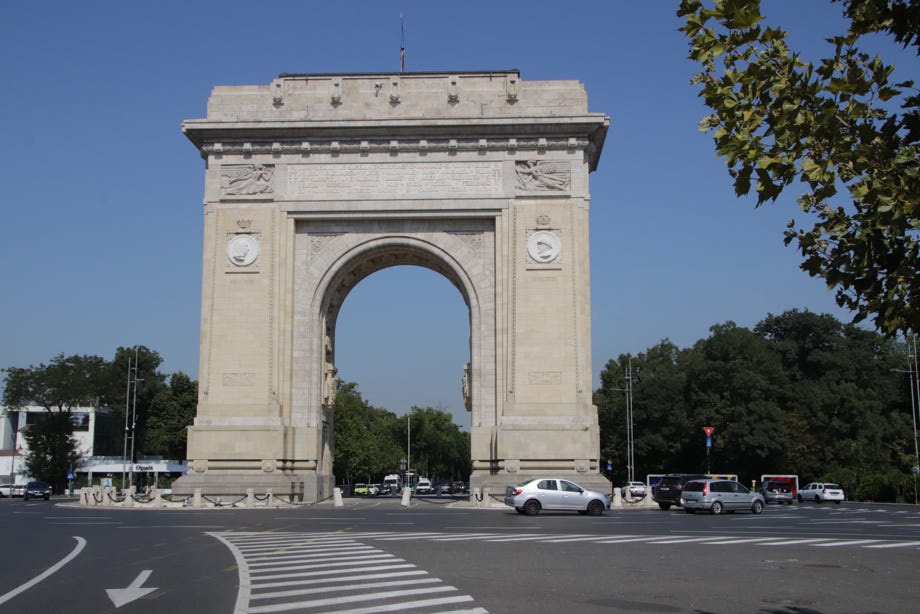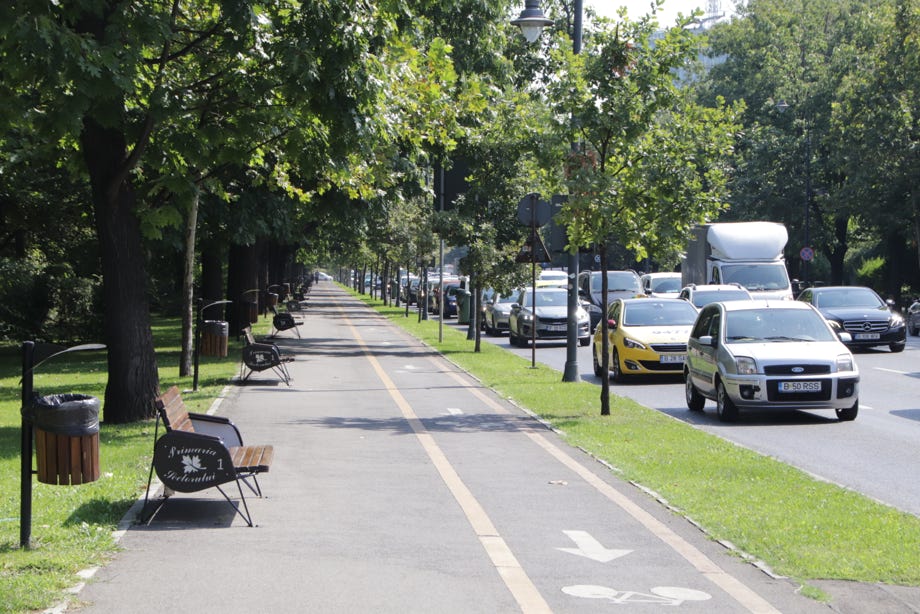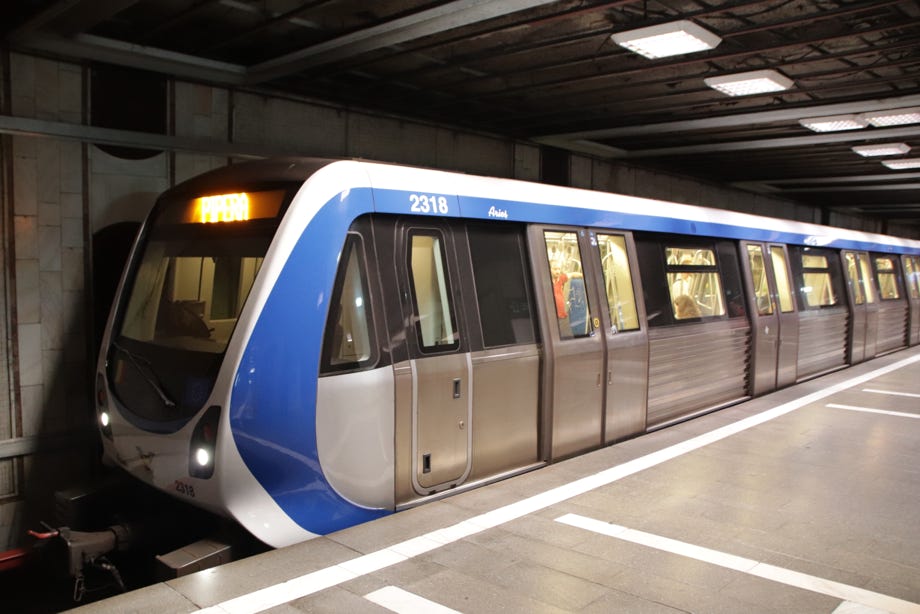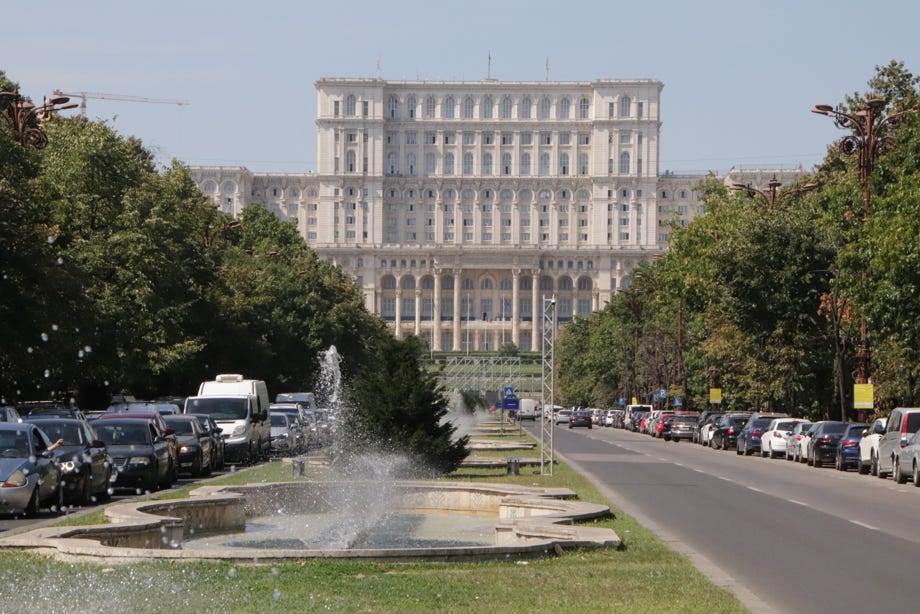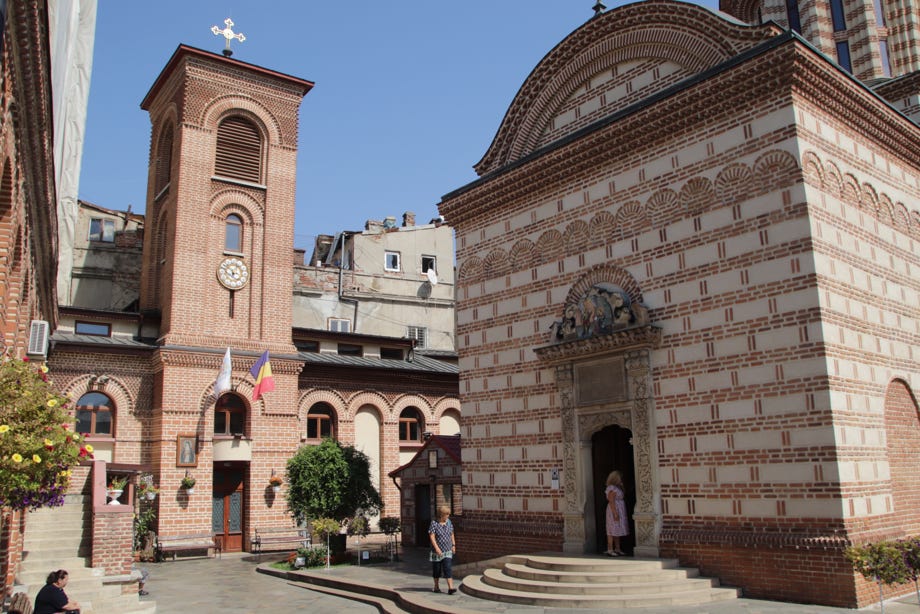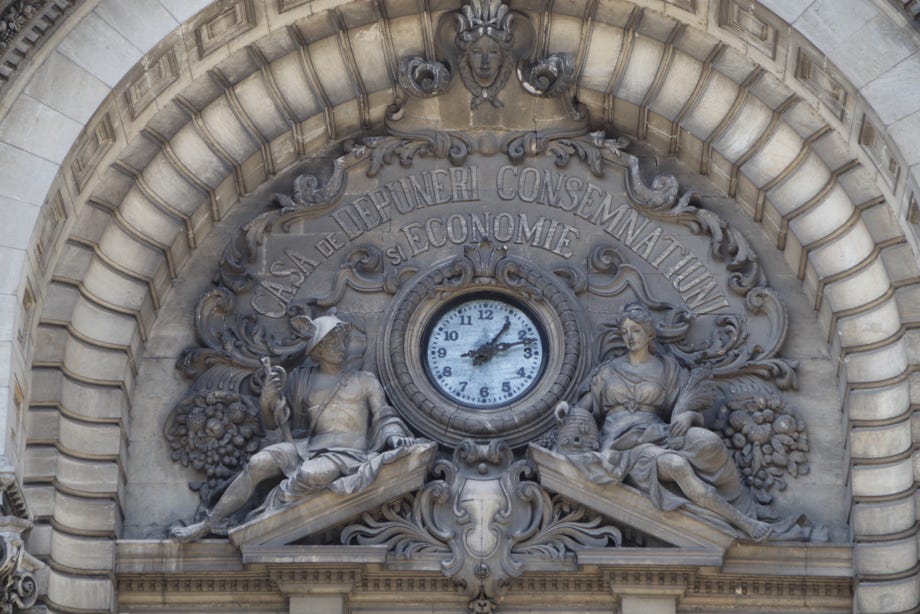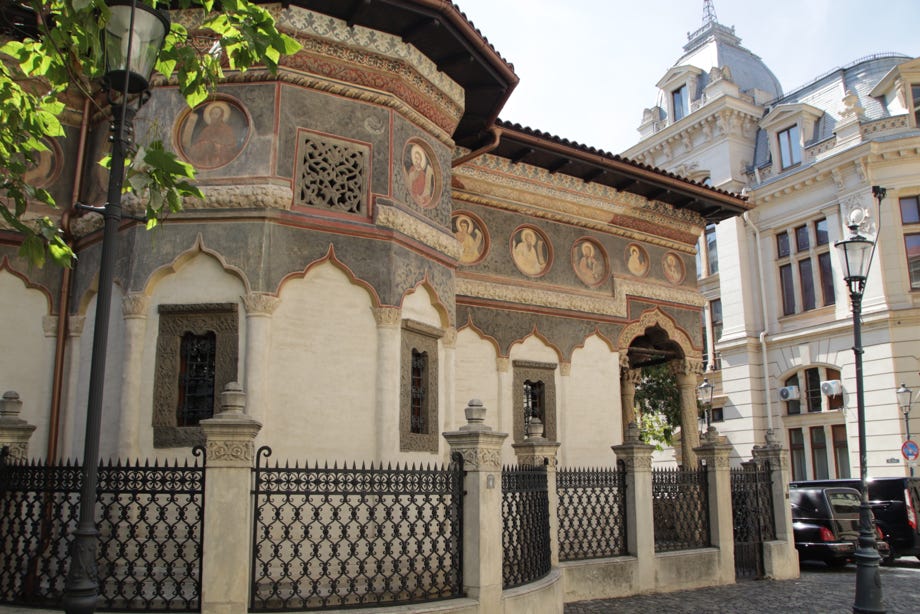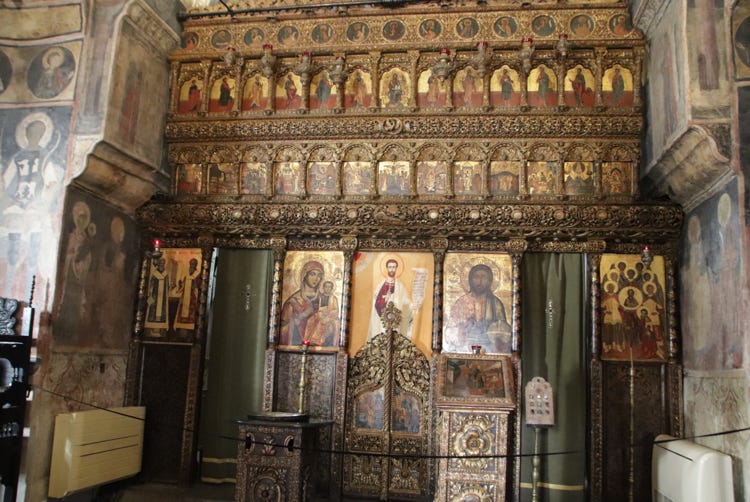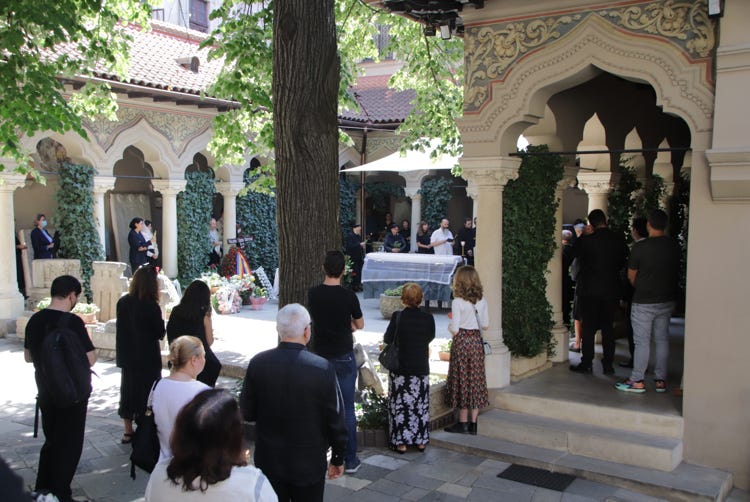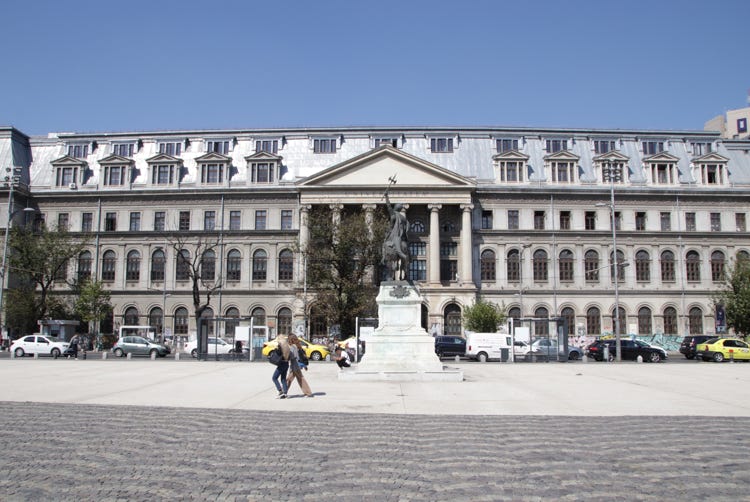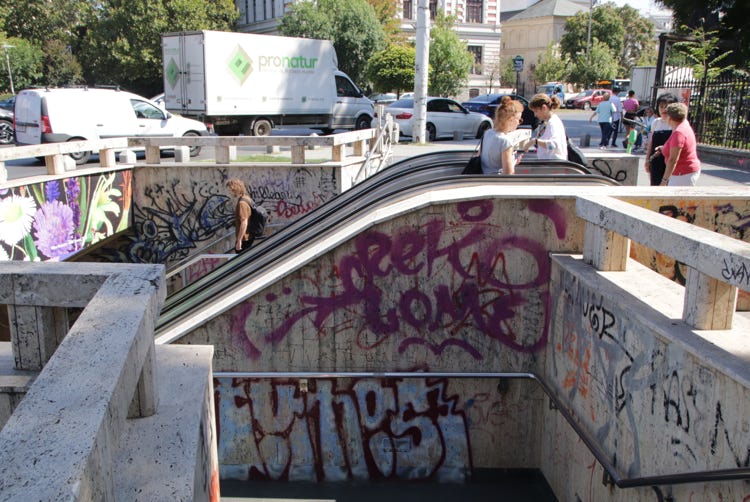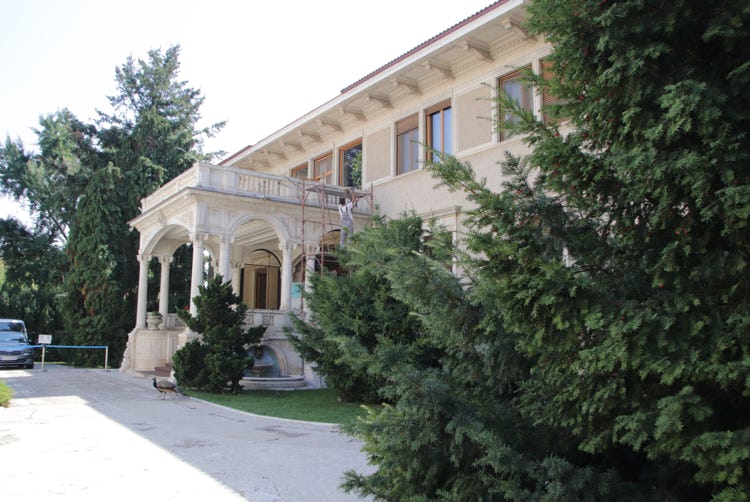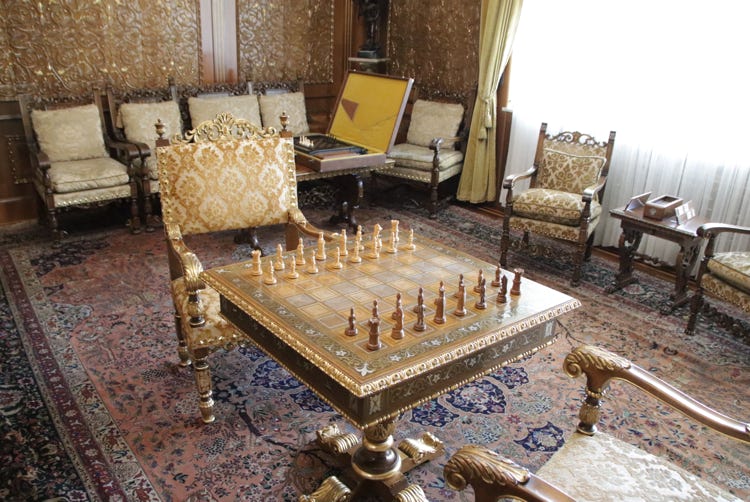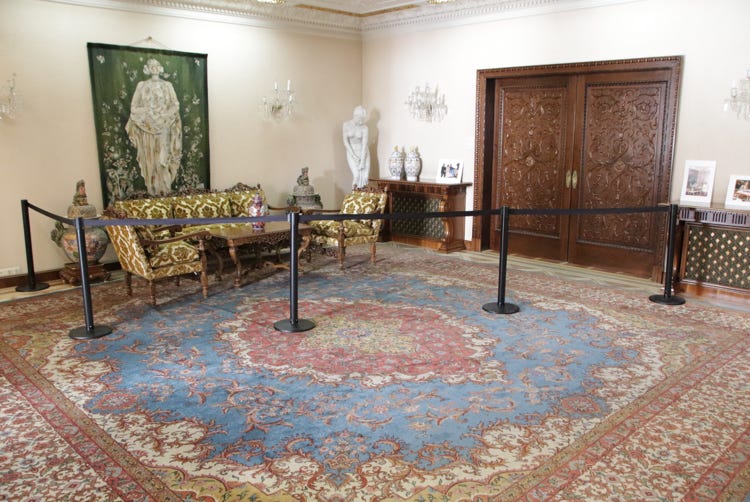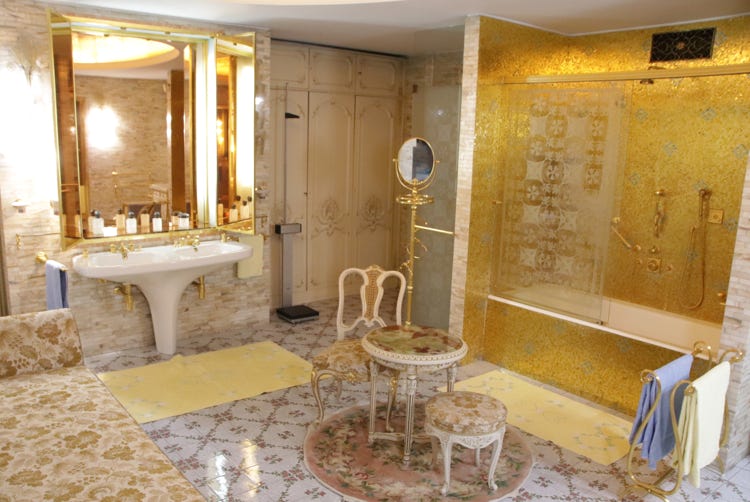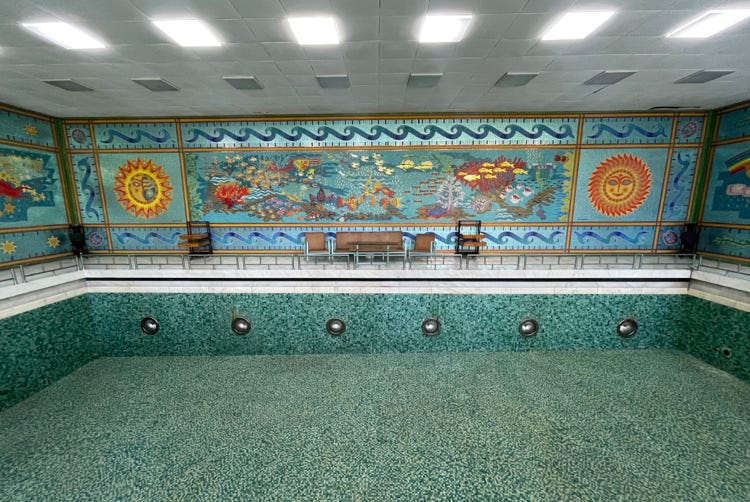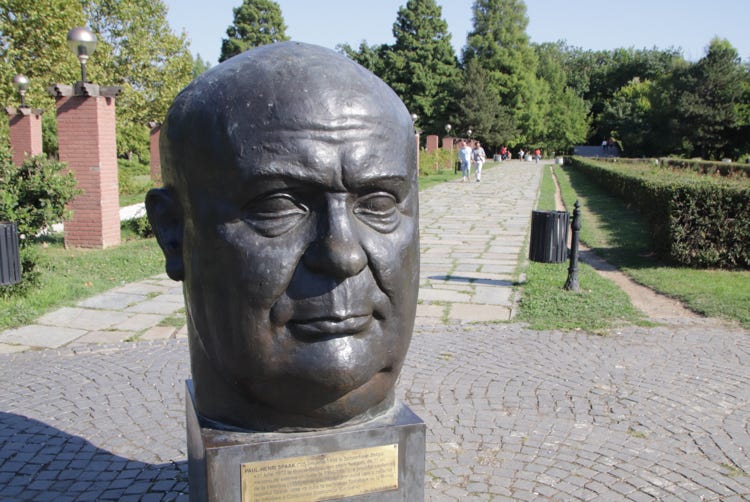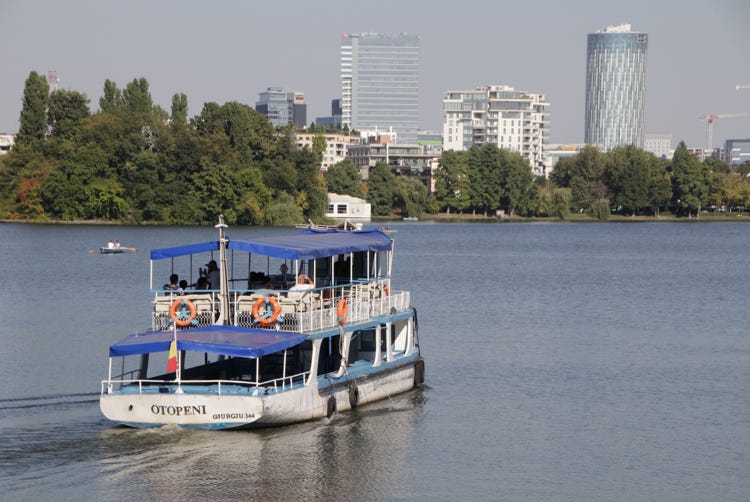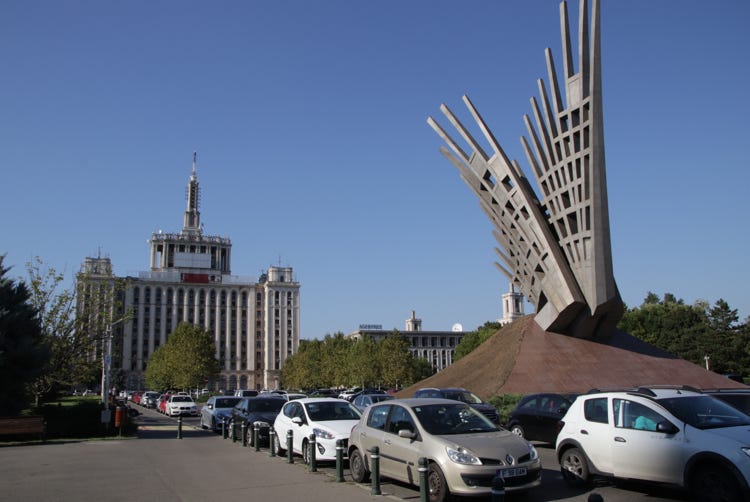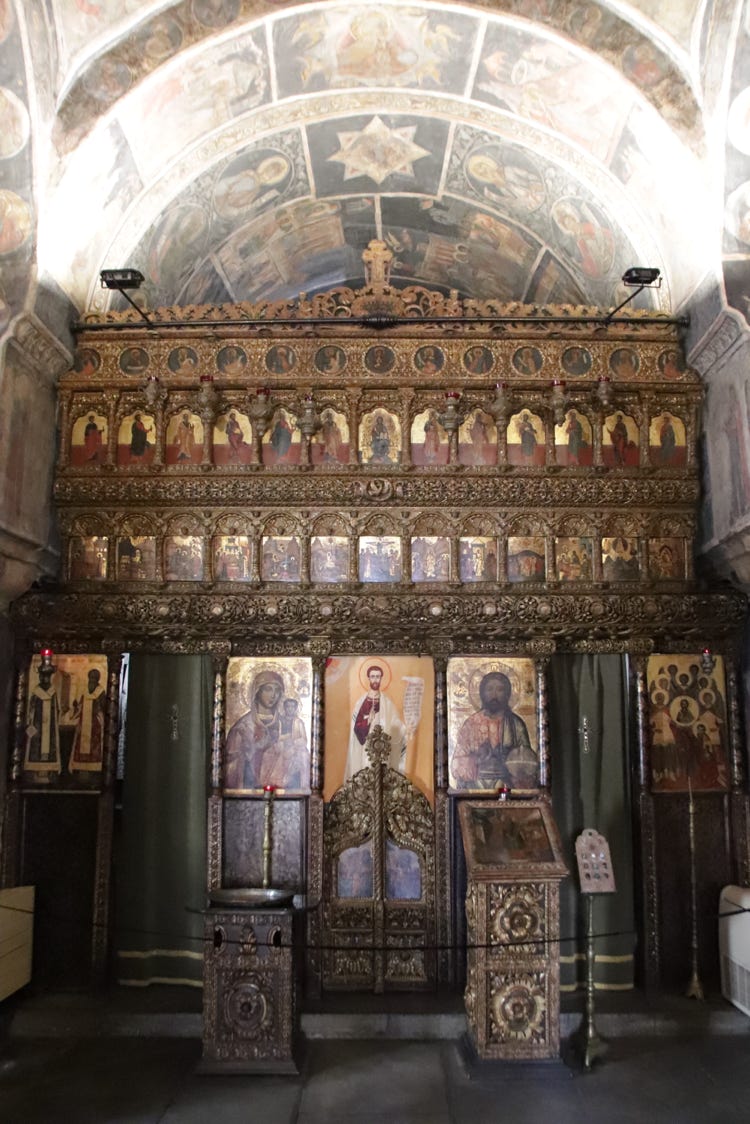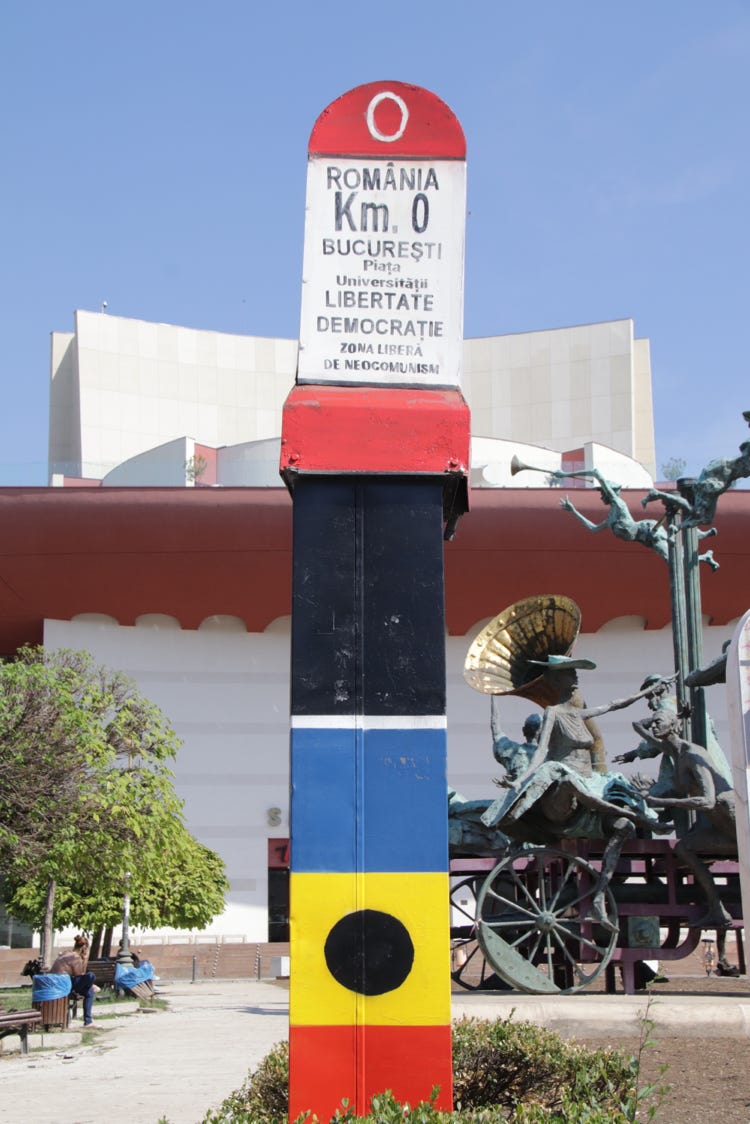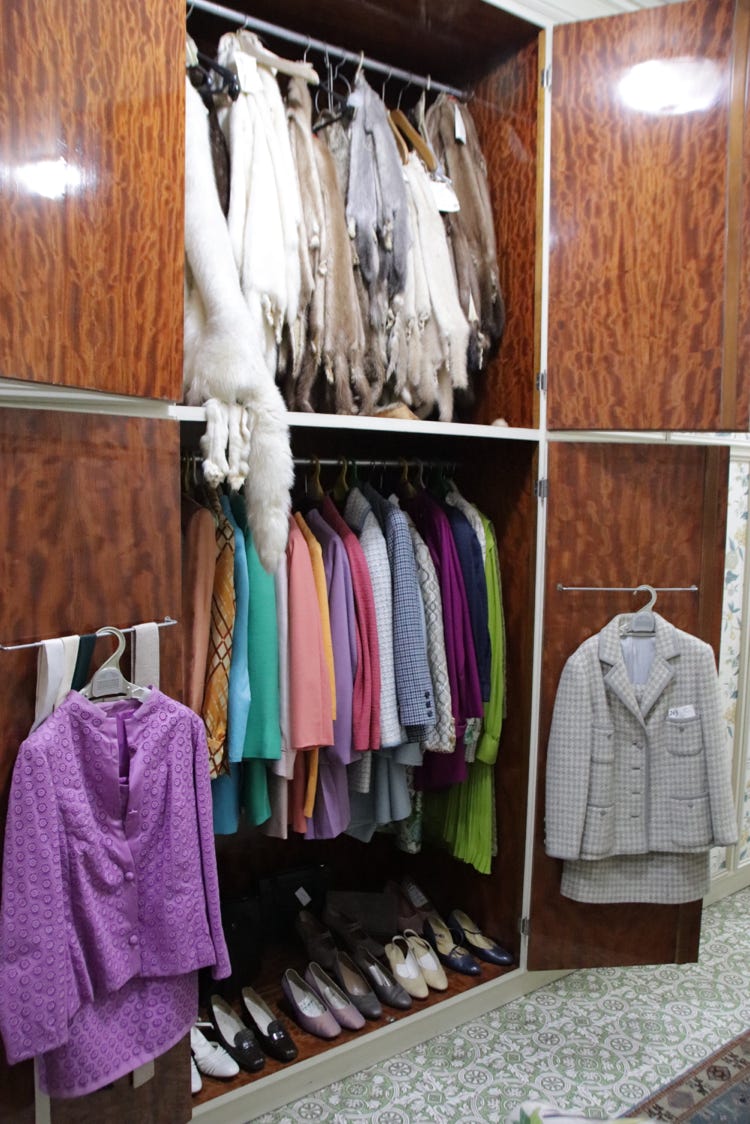
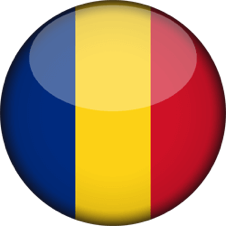

Distance travelled. = 13 kilometres driving by road, 10 kilometres by Metro, and 19 kilometres walking (25,500 steps).
With the long flights behind me, I was ready for adventure – fearing that the adventures might begin before I had left the airport terminal in Bucharest. I need not have feared. Unlike my experience crossing by car from Hungary into Romania 35 years ago, Immigration and Customs were extremely quick and smooth this time, although Romania’s reputation (in my mind) continues unabated from my previous visit in 1987 – Romanian Immigration officials are perhaps the world’s worst in terms of trying to provide a decent, legible passport stamp – the simple task seems to be beyond them.
Getting my rental car was similarly efficient, although not especially fast, mainly because some extra documentation was required because I need to take the car across the border into Bulgaria. Having added the option of GPS, navigating to my hotel was straightforward, although the navigation system of my car (a Ford Focus) is quite basic to say the least.
I checked into my hotel, the Crowne Plaza Hotel at Bulevardul Poligrafiei 1, which I had booked using points. I was delighted not only that a room was ready for me (it being just after 9am in the morning), but they offered free breakfasts each morning as an upgrade.
This first day away required some organisational matters to be attended to, such as getting cash from an ATM, securing a SIM card for my phone (as I don’t have access to global roaming), and the most pressing of all, having a good hot shower after more than 24 hours of flights. Arriving in the morning also meant that I would have some time for exploring, and the clear blue skies gave me a strong incentive to do as much looking around as my travel tiredness would permit.
The roads of Bucharest are famous for their combination of erratic driving and long traffic jams. It was the case 35 years ago, and it’s even more so in 2022. Therefore, I decided to explore Bucharest on foot, taking the Metro to connect some key points. This worked well (if ‘success’ means about six-to-seven hours to cover a distance of 19 kilometres straight after 24 hours of flights).
My walk began by passing the massive Stalinist façade of the Casa Presei Libere (House of the Free Press), a 1957 construction that house the headquarters of many of Romania’s newspapers. I continued walking south along the beautiful, shady tree-lined “Highway 1” that I remember clearly driving along in 1987 to the Arcul de Triumf (Arch of Triumph), clearly modelled on the more famous structure in Paris.
My next leg was completed by riding in the Metro, taking the underground train for four stations from Aviatorilor to Piaţa Unirii. This was a pleasantly easy experience – credit cards (or their ApplePay equivalents) are used instead of tickets as the tap-and-go entry through the turnstiles, and the cost is a standard 3 lei (92 cents Australian) irrespective of distance travelled.
Piaţa Unirii is the centre of a grandiose socialist city that Romania’s hardline ruler, Nicolae Ceausescu, dreamt of building during the 1980s. I drove through the area in 1987, and it was a morass of construction-induced chaos and congestion, focussing then on the grey concrete construction site of the massive Casa Republicii (House of the Republic). The Casa Republicii is still not quite finished, but under its new name of Palatul Parlamentului (Palace of Parliament), it now serves as the world’s second largest administrative building (after the Pentagon). Measuring 270 metres by 240 metres and 86 metres high, it has 12 storeys, a 100 metre long lobby, and 1100 rooms (of which only half are used) that are decorated with gold and marble, and illuminated by some 4,500 chandeliers (compared with the 11,000 that were planned). Unfortunately, tours of the building have been cancelled from 15th August to 28th October.
The avenue joining Piaţa Unirii and the Palatul Parlamentului is known as B-dul Unirii. Inspired by the Champs Elysee in Paris, B-dul Unirii is ridiculously wide (having replaced hundreds of old buildings that were demolished to make way for it), and indeed is something of an obstacle course for drivers who have to negotiate their way around tens of fountains.
My next destination was Bucharest’s historic centre, and on the way I found a Vodaphone store, enabling me to get a SIM card for my phone, not only providing contact with the rest of the world, but walking and driving navigation through Google Maps.
The old city zone of Bucharest is a gorgeous ensemble of old buildings that somehow managed to evade Ceauşescu’s penchant for demolishing and building huge new socialist constructions. I spent a couple of hours wandering through the narrow laneways admiring the streetscapes and ornate old buildings, especially enjoying The Old Princely Court Church and the Stavropoleos Church. Dating from 1724, many parts of the tiny Stavropoleos Church were inaccessible today because a funeral was underway, but I was still able to experience the exquisite icons, frescoes and atmosphere of the old chapel.
I took the short walk to Piaţa Universitǎţii and caught the Metro back to Aviatorilor before walking to Primaverii Palace, the residence of former leader Nicolae Ceauşescu and his family. Inspections are only conducted as group tours, so I had to wait until the next group began at 3:15pm. Before being allowed to enter the house, like everyone else I had to slip plastic covers over my shoes and follow strict orders not to touch anything or use flash for photos.
The relatively modest size of the exterior of the building hid a highly opulent interior with lots of gold plated fittings (especially in the bathrooms), antique-style furnishings, and even an indoor swimming pool and indoor jungle. Interestingly, the guide said that 70% of Romania’s population miss the Communist period because of the high rates of unemployment and corruption that followed Ceauşescu’s assassination.
A three-kilometre walk brought me back to the hotel where I have spent the rest of the afternoon and evening writing this travel diary. Perhaps understandably, I feel extraordinarily tired, so maybe it’s time to stop writing, sort some photos and then start uploading this diary.

